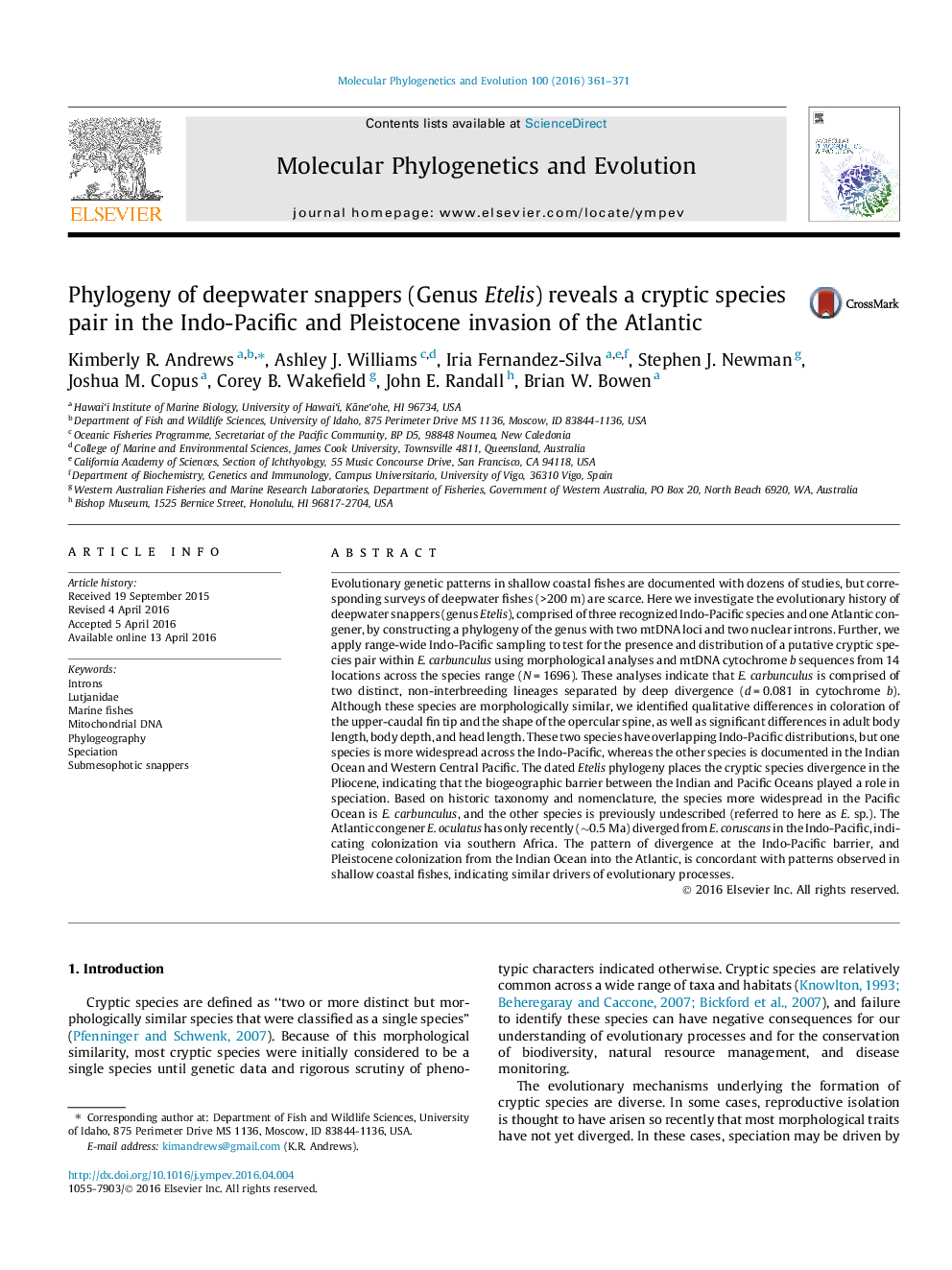| کد مقاله | کد نشریه | سال انتشار | مقاله انگلیسی | نسخه تمام متن |
|---|---|---|---|---|
| 2833675 | 1570797 | 2016 | 11 صفحه PDF | دانلود رایگان |

• We provide one of the first phylogeographic studies of deepwater fishes.
• Genetics and morphology reveal that IndoPacific Etelis carbunculus is two species.
• The Atlantic Etelis oculatus is a recent (∼0.5 Ma) colonist from the Indo-Pacific.
• Phylogeographic patterns in genus Etelis are similar to those of shallow fishes.
Evolutionary genetic patterns in shallow coastal fishes are documented with dozens of studies, but corresponding surveys of deepwater fishes (>200 m) are scarce. Here we investigate the evolutionary history of deepwater snappers (genus Etelis), comprised of three recognized Indo-Pacific species and one Atlantic congener, by constructing a phylogeny of the genus with two mtDNA loci and two nuclear introns. Further, we apply range-wide Indo-Pacific sampling to test for the presence and distribution of a putative cryptic species pair within E. carbunculus using morphological analyses and mtDNA cytochrome b sequences from 14 locations across the species range (N = 1696). These analyses indicate that E. carbunculus is comprised of two distinct, non-interbreeding lineages separated by deep divergence (d = 0.081 in cytochrome b). Although these species are morphologically similar, we identified qualitative differences in coloration of the upper-caudal fin tip and the shape of the opercular spine, as well as significant differences in adult body length, body depth, and head length. These two species have overlapping Indo-Pacific distributions, but one species is more widespread across the Indo-Pacific, whereas the other species is documented in the Indian Ocean and Western Central Pacific. The dated Etelis phylogeny places the cryptic species divergence in the Pliocene, indicating that the biogeographic barrier between the Indian and Pacific Oceans played a role in speciation. Based on historic taxonomy and nomenclature, the species more widespread in the Pacific Ocean is E. carbunculus, and the other species is previously undescribed (referred to here as E. sp.). The Atlantic congener E. oculatus has only recently (∼0.5 Ma) diverged from E. coruscans in the Indo-Pacific, indicating colonization via southern Africa. The pattern of divergence at the Indo-Pacific barrier, and Pleistocene colonization from the Indian Ocean into the Atlantic, is concordant with patterns observed in shallow coastal fishes, indicating similar drivers of evolutionary processes.
Figure optionsDownload as PowerPoint slide
Journal: Molecular Phylogenetics and Evolution - Volume 100, July 2016, Pages 361–371